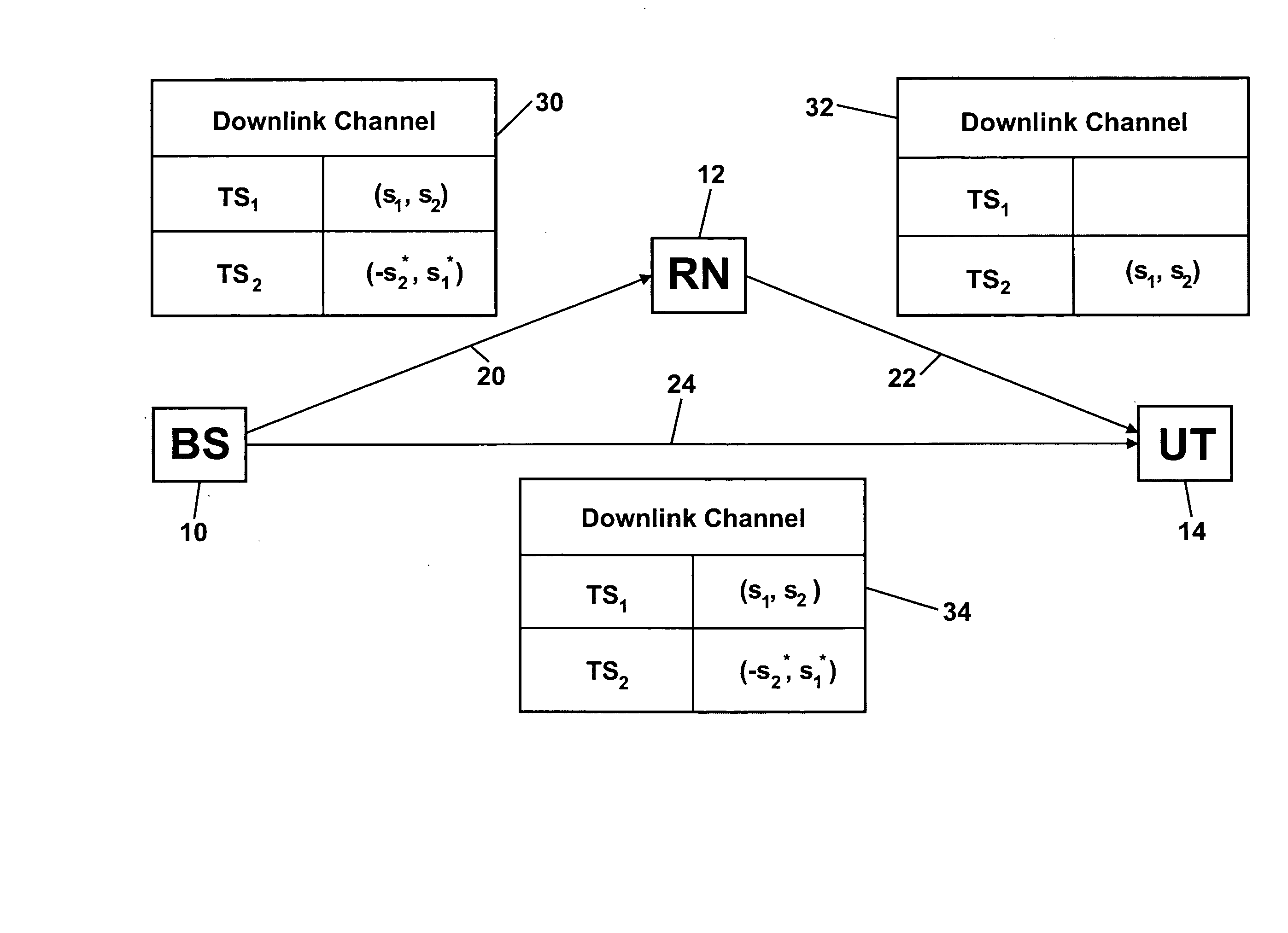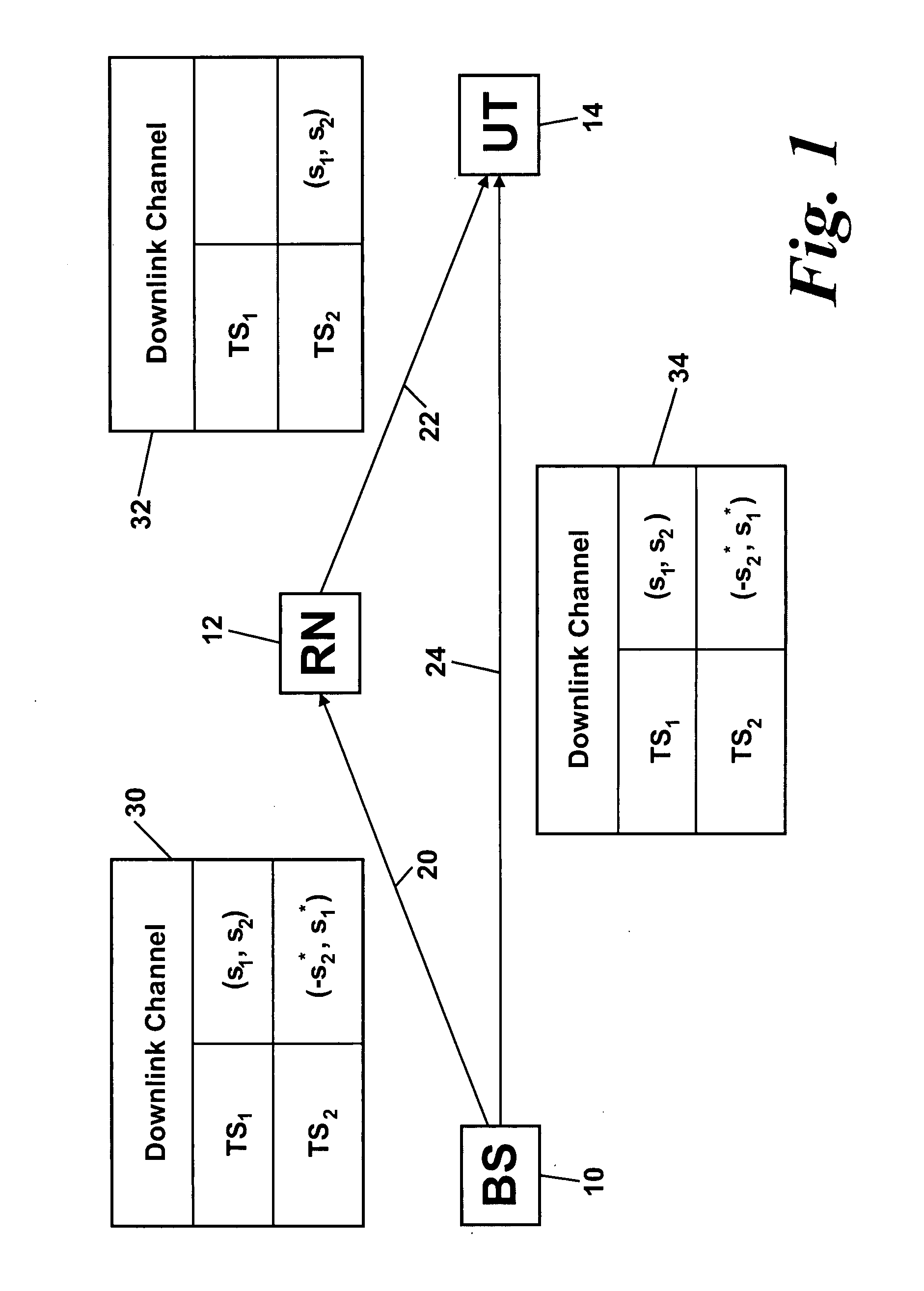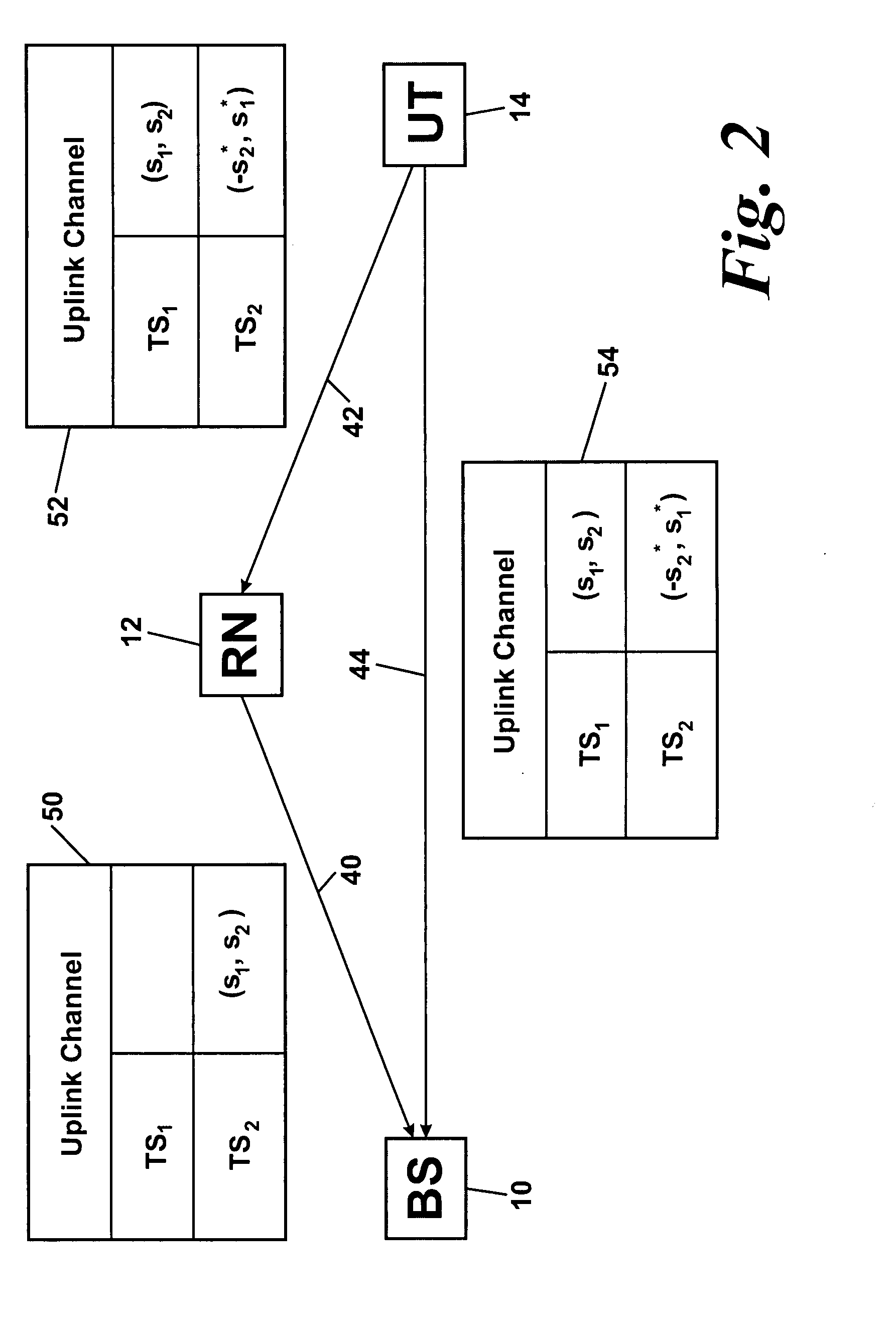Space Time Block Code Communications with Co-Operative Relays
a technology of spacetime block code and co-operation relay, which is applied in the direction of frequency-division multiplex, repeater circuit, transmission monitoring, etc., can solve the problems of high network cost, achieve the effect of enhancing reducing the overall cost of the network, and improving the quality of received signals
- Summary
- Abstract
- Description
- Claims
- Application Information
AI Technical Summary
Benefits of technology
Problems solved by technology
Method used
Image
Examples
Embodiment Construction
[0029] The following is a description of the best mode of practicing the invention known to the inventor.
[0030]FIG. 1 shows transmission on the downlink in accordance with the present invention. A base station BS 10 transmits a downlink signal which is received by a relay node RN 12 as downlink signal 20 and by a user terminal UT 14 as downlink signal 24. RN 12 also transmits a downlink signal 22 which is received by UT 14. Tables 30, 32, and 34 show the contents of downlink signals 20, 22 and 24 respectively. Each signal comprises two downlink channels—timeslot TS1 and timeslot TS2.
[0031] The contents of downlink signals 20 and 24 transmitted from BS 10 comprise two symbols (s1, s2) in TS1 and a function of the two symbols (−s2*, s1*) in TS2 (where x* represents the complex conjugate of x). If these symbols (s1, s2) and (−s2*, s1*) were transmitted in the same downlink channel (e.g., in TS1) from two separate antennas of the base station for reception at a single antenna of a use...
PUM
 Login to View More
Login to View More Abstract
Description
Claims
Application Information
 Login to View More
Login to View More - R&D
- Intellectual Property
- Life Sciences
- Materials
- Tech Scout
- Unparalleled Data Quality
- Higher Quality Content
- 60% Fewer Hallucinations
Browse by: Latest US Patents, China's latest patents, Technical Efficacy Thesaurus, Application Domain, Technology Topic, Popular Technical Reports.
© 2025 PatSnap. All rights reserved.Legal|Privacy policy|Modern Slavery Act Transparency Statement|Sitemap|About US| Contact US: help@patsnap.com



